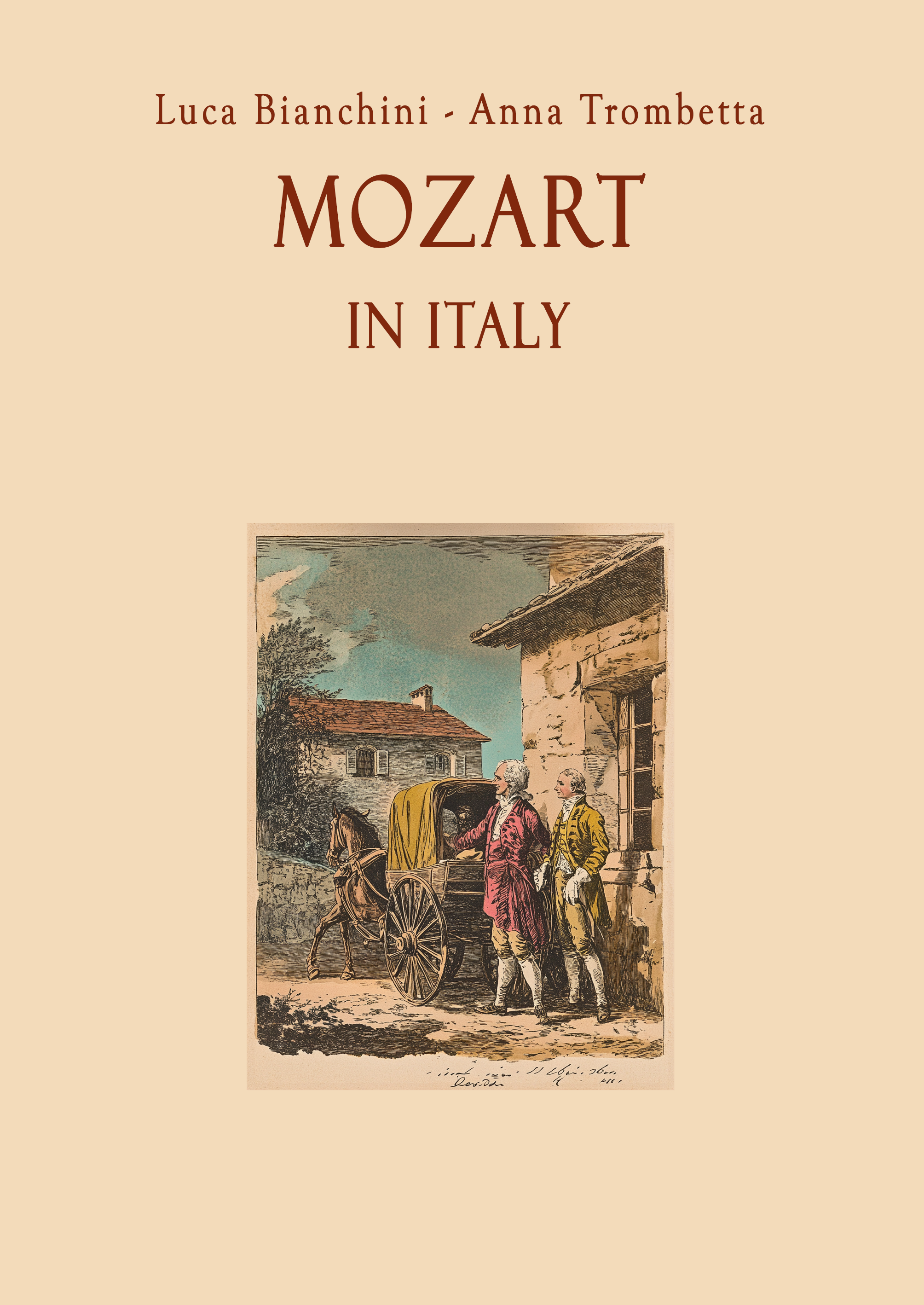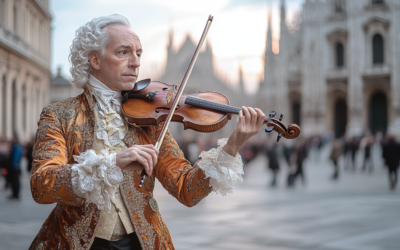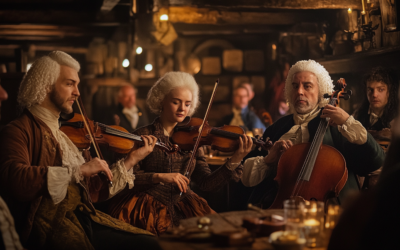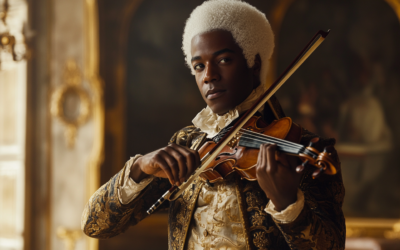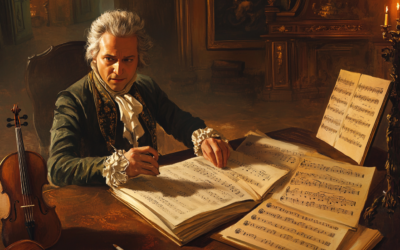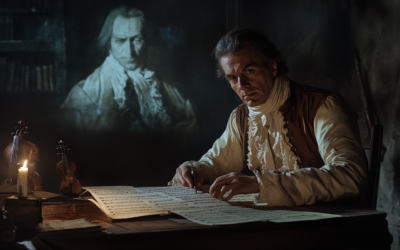Rediscovering Musical Roots
The World Premiere of Gasparini and Mysliveček
How a Historic Performance Challenges the Mozart Myth and Sheds Light on Overlooked Masters
This December, history will come alive as the Camerata Rousseau unveils forgotten treasures by Quirino Gasparini and Josef Mysliveček. These premieres not only celebrate their artistry but also reveal the untold influence of Gasparini on Mozart’s Mitridate re di Ponto. A pivotal event for anyone passionate about rediscovering music history.
Mozart in Italy: The Untold Story
Was Mozart truly a solitary genius, or was he merely the instrument of his father’s ambition? “Mozart in Italy” challenges the conventional narrative, revealing a complex dynamic between father and son that shaped the course of music history. Prepare to question everything you thought you knew.
“History’s forgotten voices deserve to be heard—for they often carry truths that challenge our most cherished legends.”
Mozart in Italy
This December, the Camerata Rousseau will deliver an event of unparalleled significance in the world of classical music. Over three evenings in Switzerland, audiences will experience the world premieres of Quirino Gasparini’s Cembalo Concerto in F Major and the aria Al destin che la minaccia from his opera Mitridate re di Ponto. Alongside these, Josef Mysliveček’s Sinfonia in B-flat Major will also be performed, providing a rare opportunity to appreciate the brilliance of two composers often overshadowed by Mozart.
Why is this event groundbreaking? Gasparini’s works are not merely historical curiosities—they are the very foundations upon which Mozart built parts of his reputation. The aria Al destin che la minaccia is a glaring example. This exquisite piece was blatantly used by Mozart as a model for his own Mitridate re di Ponto, performed in Milan in 1770. The premiere offers modern audiences the chance to hear Gasparini’s original work, transcribed and revised with meticulous care by us, allowing listeners to appreciate its intrinsic beauty and pivotal role in shaping Mozart’s compositions.
As the program booklet highlights, Bologna—a crucial cultural hub in the 18th century—was where connections between Mysliveček, Gasparini, and Mozart were forged under the guidance of Padre Martini. Martini was a key figure, acting as a bridge among these composers, and his influence can be traced in their works. The Mozarts themselves drew heavily from this environment, taking inspiration—and sometimes outright ideas—from Mysliveček’s La Nitteti. The rediscovery of these relationships challenges long-held assumptions about Mozart’s originality and genius, offering a more nuanced view of his creative process.
The program for these concerts includes:
Saturday, 14 December 2024, 7:30 PM – Bern, Grosse Saal Konservatorium
-
Josef Mysliveček: Sinfonia in B-flat Major (World Premiere)
-
Quirino Gasparini: Cembalo Concerto in F Major (World Premiere)
-
Quirino Gasparini: Al destin che la minaccia (World Premiere)
-
Wolfgang Amadeus Mozart: Aria Voi avete un cor fedele
-
Joseph Haydn: Trauersinfonie in E minor
Sunday, 15 December 2024, 5:00 PM – Basel, Don Bosco
The same program will be performed, offering another chance to witness this historic moment.
These performances also coincide with the upcoming release of Mozart in Italy, the definitive English edition of our groundbreaking book. The translation has been professionally revised and includes significant new material, further illuminating the connections among Mysliveček, Gasparini, and Mozart. This book will provide music enthusiasts and scholars with fresh insights into how Mozart’s Italian journey shaped his career and how much he owed to the composers he encountered.
For those keen on exploring the details of Mysliveček’s Sinfonia or Gasparini’s works, Maestro Leonardo Muzii—the conductor of the Camerata Rousseau—is an invaluable resource. His expertise in historical performance practices ensures these premieres will bring the music to life with authenticity and brilliance.
This event is more than a concert series; it is a celebration of overlooked genius, a challenge to entrenched myths, and a tribute to the interconnectedness of musical history. To miss it would be to forgo a unique opportunity to hear the music that not only shaped the past but also reshapes our understanding of it today.
You May Also Like
The Uncertain Origins of Mozart’s Early String Quartets
Mozart’s so-called “Milanese Quartets” (K.155, 158, and 159) have long been subject to debate, primarily due to their ambiguous instrumentation and structural weaknesses. Were these works part of a larger series of orchestral divertimenti, hastily repurposed as string quartets? The answer remains elusive, reflecting the young composer’s struggles to find his own voice.
Mozart’s Quartet of Lodi: A Dated Work with Many Influences
Mozart’s Quartet of Lodi is often praised as an early masterpiece. But was it really his own work?
The Hidden Influence of Joseph Boulogne, Chevalier de Saint-George
Joseph Boulogne, known as the “Black Mozart”, was shaping the future of music while Mozart was still struggling for recognition in Paris. But history has buried the significant influence Saint-George had on Mozart’s career, erasing his pioneering style from the narrative.
Mozart’s Violin Pieces: Substitutes for Failed Movements?
Despite revisions, Mozart’s violin concertos remain flawed, while his minor pieces, K.261 and K.373, surprisingly garner more attention in his correspondence than his major works.
The Questionable Origins of Mozart’s Violin Concertos
Are Mozart’s violin concertos truly original? This article explores the possibility that the Czech composer Josef Mysliveček played a far larger role in their creation than previously acknowledged.
The Kolb Concerto: A Mozartian Mirage?
The Kolb Concerto’s dubious origin and poor musical quality expose yet another myth in the Mozartian canon. If this is the work of a genius, then perhaps we’ve been fooled for centuries.

